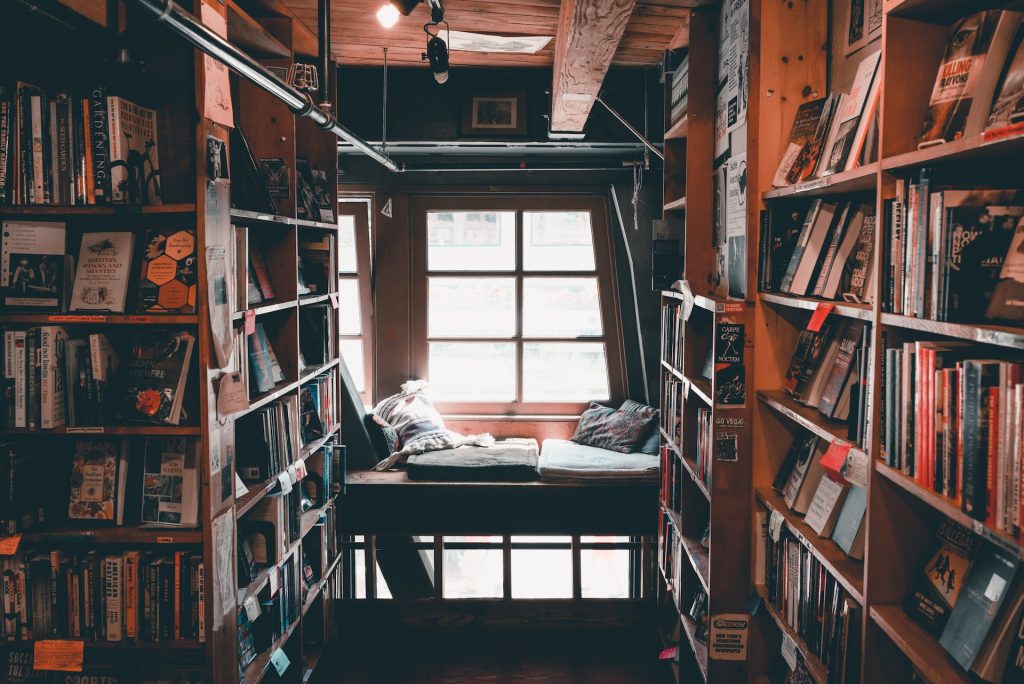Design Your Perfect Library Garage: Tips & Ideas
A resurgence in the popularity of home libraries is seen in recent years. With the increasing digitization of our world, there’s a renewed appreciation for the tactile experience of reading physical books. There is also a growing trend for dedicated hobby spaces in our homes, where individuals can engage deeply with their interests, such as gaming rooms, home arcade, painting nooks, music recording lounges, photography rooms, and library garages. The library garage provides a unique twist on the traditional concept of a home library, blending functionality with a personal passion for books.
Planning Your Library Garage Space
Assessing the Available Space
The first step in creating a library garage is understanding the space you have to work with. Begin by measuring the garage’s dimensions — length, width, and height. Consider any built-in features or limitations, such as windows, doors, or fixed storage areas. Assess the floor condition and whether it needs refinishing. Also, take into account the garage door — will it stay operational, or will it be sealed off? Understanding these elements is crucial in determining how much space you have for bookshelves, seating areas, and other library features.
Essential Considerations for Layout and Design
Once you’ve assessed your space, it’s time to think about layout and design. The goal is to create a functional yet inviting library. Start by considering the flow of the room — how you will move through the space, where you’ll place larger pieces of furniture, and how the room will be navigated. Think about focal points, like a central reading area or a feature bookshelf. Lighting plays a crucial role too; plan for a mix of natural and artificial light sources to create a warm, well-lit space. Lastly, consider the design — what style speaks to you? Some ideas include modern minimalism, cozy traditional, or eclectic chic. Your design choices should reflect your personal taste and make your library garage a place where you love to spend time.
Designing for Comfort and Style
Transforming your garage into a library is also about creating a space where you can relax, read, and enjoy literature in the comfort of your own space.
Selecting the Right Furniture
Furniture in your library garage should be both functional and stylish. Start with the essential piece: the bookshelves. Opt for durable materials that can bear the weight of books and match your stylish preferences. Next, consider your seating. A comfortable reading chair or a cozy sofa is a must-have. Look for ergonomically designed options that support long reading sessions. If you have space, add a desk or a table for writing or laying out books. Finally, think about secondary pieces like side tables, a coffee table, or a ladder for high shelves.
Lighting and Ambiance
Lighting is crucial in a library. Aim for a layered lighting approach: start with good overhead lighting, add task lighting like table lamps or floor lamps near reading spots, and consider accent lighting to highlight your bookshelves or art. Soft, warm light creates a cozy and inviting atmosphere. Regarding ambiance, color schemes, wall decorations, and even small accessories play a significant role. Choose colors that are soothing and conducive to relaxation. Wall art, rugs, and decorative items should reflect your personality and love for literature, making the space truly your own.
Organizing Your Book Collection
A well-organized book collection not only makes it easier to find what you’re looking for but it also looks well put together.
Shelving Solutions
With shelving, considering both functionality and style is a good idea. You might choose floor-to-ceiling shelves for a dramatic effect and maximum storage, or floating shelves for a modern look. Adjustable shelves are practical as they allow you to accommodate books of various sizes. The arrangement of books can also be a form of decoration — whether organized by color, size, genre, or author.
Cataloging Your Books
A systematic approach to cataloging can transform your collection from a mere accumulation of books into a well-organized library. You can catalog your books alphabetically, by genre, or even by the date you acquired them. For a more tech-savvy approach, a library management software that allows you to track your collection and find books easily is recommended.
Audio-Visual Equipment for Multimedia Experiences
For a truly immersive literary experience, incorporate audio-visual technology. A sound system for audiobooks and podcasts, a projector or screen for literary adaptations, and even a small media console for music can enhance your reading experience. This multimedia approach allows you to enjoy literature in various formats, making your library garage a versatile space for all kinds of literary adventures.
Climate Control and Preservation
Creating the right environment in your library garage is essential to protect your books and ensure a comfortable reading space.
Maintaining Ideal Temperature and Humidity
Books are sensitive to temperature and humidity fluctuations. To preserve them, it’s important to maintain a consistent, moderate temperature and humidity level in your library garage. Consider installing a good HVAC system to regulate these conditions. Additionally, a dehumidifier can be crucial in damp climates to prevent mold growth and paper degradation. Investing in a hygrometer to monitor humidity levels is also a wise decision, ensuring the environment remains book-friendly at all times.
Protecting Books from Damage
Beyond climate control, there are other measures to protect your books. Ensure that your shelving material and the positioning of books safeguard them from direct sunlight, which can cause fading and deterioration. Consider using window treatments to filter light. Also, be mindful of pests that could damage books; regular inspections and cleanings can help prevent infestations.

Adding Personal Touches
Personalizing your library garage is what turns it from just a storage space into your own private retreat.
Decor and Personalization
Your library garage should reflect your personality and literary tastes. Choose a color scheme and decorations that make you feel relaxed and inspired. Wall art, whether it’s book-related posters, classic artwork, or personal photographs, adds character to the space. Small accessories like vintage bookends, a globe, or a decorative lamp can also enhance the ambiance. Don’t forget about plants; they not only add life to the room but also improve air quality.
Creating a Reading Nook
A cozy reading nook is the centerpiece of any library. Find a spot in your garage library that feels comfortable and inviting. It could be a corner with natural light or a secluded space for privacy. A plush armchair or a chaise lounge with a soft throw blanket and pillows can make the perfect reading spot. Add a small side table for your coffee or tea and a reading lamp, and you’ve got a perfect little escape within your library.
The DIY Approach to Building a Library Garage
For those who prefer a hands-on approach, transforming your garage into a library can be a fulfilling DIY project. However, it’s important to know when to tackle tasks yourself and when to seek professional help.
Basic Construction Tips
If you’re handy and familiar with basic construction, many aspects of building your library garage can be DIY projects. Start by thoroughly cleaning and clearing the space. If you’re painting, choose a mildew-resistant paint suitable for garages. For shelving, consider using sturdy materials like wood or metal, and ensure they’re securely anchored to the wall. If you’re laying down new flooring, options like laminate or vinyl can be DIY-friendly and add warmth to the space. Always prioritize safety, especially when working with power tools or electrical systems.
When to Call in Professionals
Certain tasks require professional expertise. If you need to alter the garage’s structure, such as removing a wall or adding windows, it’s best to hire a contractor. Electrical work, especially if you’re adding new outlets or lighting fixtures, should also be done by a licensed electrician. If you’re unsure about any aspect of the construction, consulting with a professional can save time and prevent costly mistakes.
Legal Considerations and Permissions
Before you start converting your garage into a library, it’s crucial to understand and adhere to local laws and regulations to ensure your project is compliant and legal.
Zoning Laws and Regulations
First, check your local zoning laws. These laws dictate how properties in your area can be used and might have specific rules about converting a garage into a living space. Restrictions might relate to how the conversion affects parking, the total square footage of living space on your property, or how close structures can be to property lines. Ignoring these laws can lead to costly fines and even require you to undo the changes you’ve made.
Obtaining Necessary Permits
In many areas, significant home renovations, like converting a garage into a library, require permits. This is particularly true if you plan structural changes, electrical upgrades, or significant alterations. Contact your local building department to find out what permits you need. They might require detailed plans or inspections as part of the permitting process. Although obtaining permits can add time and cost to your project, it ensures everything is up to code, which is crucial for your safety and can be important if you ever sell your home.
Conclusion
Converting a garage into a library is a unique project that combines the practicality of space utilization with the personal joy of creating a reading haven. Key takeaways include the importance of planning, designing for comfort and style, organizing your book collection, and incorporating technology for a modern twist. Remember to consider climate control for book preservation, add personal touches for a cozy ambiance, and manage your budget wisely. Don’t forget the legal aspects like zoning laws and permits to ensure your library garage is compliant with local regulations.
FAQs
1. Do I need to alter the structure of my garage to convert it into a library?
Depending on your design and needs, structural changes might be necessary, especially for adding windows, doors, or custom shelving. Always consult a professional for significant structural changes.
2. Can I convert my garage into a library on a tight budget?
Absolutely! With a DIY approach, repurposing furniture, and cost-effective materials, you can create a cozy library space even on a tight budget.
3. How do I ensure my books are protected in the garage library?
Focus on climate control by maintaining a stable temperature and humidity level. Use shelves that protect books from direct sunlight and consider a dehumidifier in damp climates.
4. Is it possible to make my library garage eco-friendly?
Yes, use sustainable materials for shelving and decor, opt for energy-efficient lighting, and consider proper insulation to make your library garage more eco-friendly.
5. What should I do if my garage is small?
Utilize vertical space with tall bookshelves, choose multipurpose furniture, and ensure a clutter-free layout to make the most of a small garage space.




